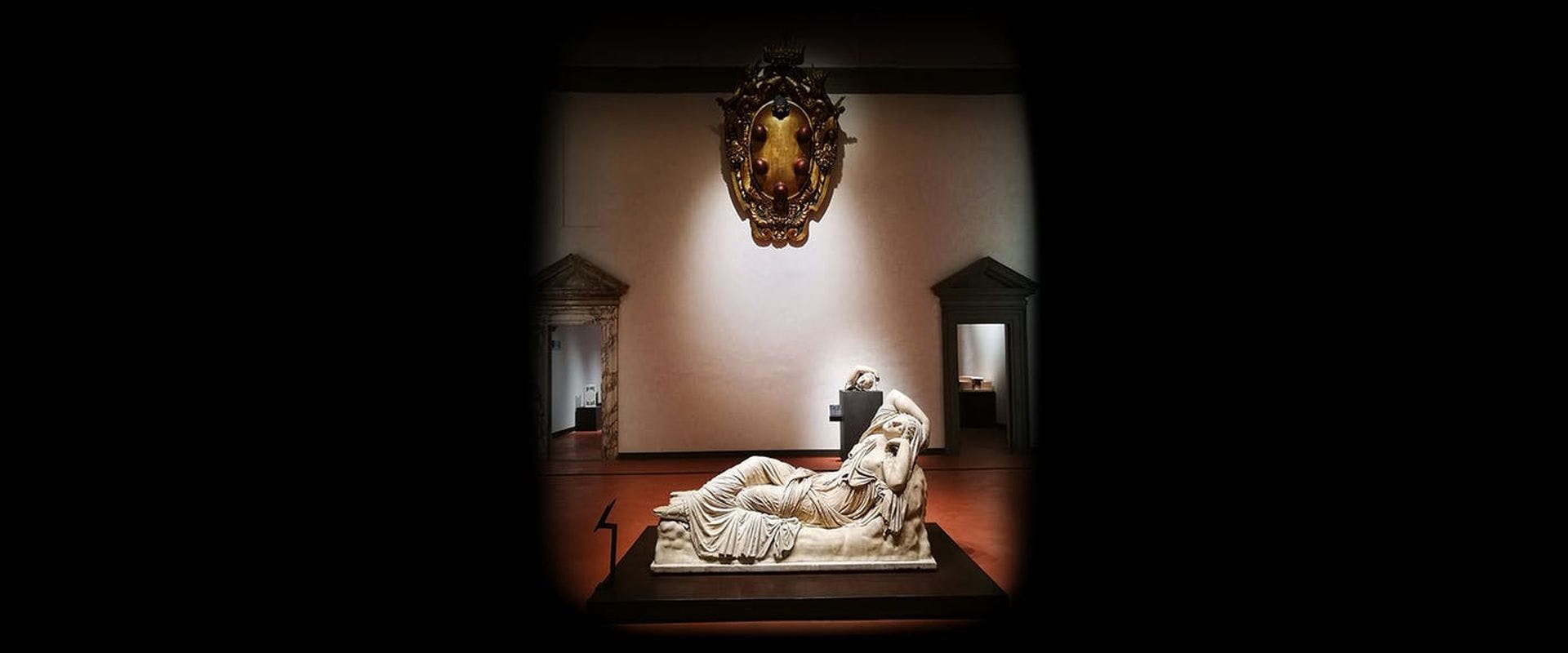New Vasari Auditorium and rooms telling the story of the Uffizi
New modern premises for seminars, conferences, meetings and debates
"Florence is acquiring a new area for the enhancement of culture, education and the dissemination of knowledge, a space specifically designed to host conferences, scientific seminars, public debates and cultural events in the broadest sense of the term," Uffizi Gallery Director Eike Schmidt said, introducing the new Auditorium rightly dedicated to Giorgio Vasari, the architect who designed the Uffizi complex.
The new rooms in the Uffizi's west wing are the only ones still perfectly preserving Vasari's original, repetitive modular design (comprising a large room giving onto the portico with two smaller rooms behind). These rooms originally hosted the hearings and offices of certain Florentine magistratures (the Conservatori di legge, Pupilli, Grascia and so forth).
"The restoration work on the ground floor of the so-called 'Short Uffizi' for the very first time," explained Andrea Pessina, Director General of Archaeology, the Fine Arts and Landscape for Florence, Prato and Pistoia, "has allowed us to conduct a number of major inspections of an archaeological nature, thus further increasing our never totally exhaustive knowledge of the Uffizi's vast fabric."
The architectural and technological solutions adopted have been specifically devised and tailored to cater for the special features of the rooms involved, the underlying criterion being showing the utmost respect for all the stratified layers and alterations made to Vasari's enormous fabric over four and a half centuries. It has also been possible to restore and to leave on public display the absolutely superb ancient doors, the only remaining testimonials to the wooden furnishings that once adorned the residences of the Arti, or Guilds, and Magistratures that moved into the Uffizi in the second half of the 16th century. These unique examples, true masterpieces of Florentine carpentry, are rich in detail and in refined carving, ranging from the stern simplicity of the Mercanti di Calimala door – studded and divided up into twenty-four rectanglar panels devoid of coast-of-arms, crests or any other devices – to the richness of the Porta delle Suppliche – with its six panels elegantly carved to a design by Bernardo Buontalenti. The doors are now displayed on the basis of a project developed under the guiding hand of Alessandra Marino, Director General for Architectural Assets until 2016.
The Vasari Auditorium – fitted with an audivisual amplifier and projector system with a retractable screen – can either be connected to the interior of the museum or, alternatively, can function as an independent venue accessible from the exterior, which explains why one of the rooms has been equipped with a cloakroom area. Alongside the auditorium we find the Room of the Sleeping Ariadne, pointing up the importance of Classical statuary at the start of Medici collecting in the Uffizi and pointing the way to the rooms of the future Antiquarium, which is due to be installed on the ground floor over the next few years. Below the monumental 16th century Medici Coat-of-Arms in the centre of the room we find the marble statue of the Sleeping Ariadne, a Roman copy of a Hellenistic sculpture dating back to the 3rd century BC, and over against the wall visitors can inspect the statue's original head, which was replaced by a copy carved by Francesco Carradori after the Ariadne reached Florence in 1787. The Room of the Uffizi's Foundation hosts eight late 16th century chairs originally in the Pitti Palace, reproducing the Uffizi's foundation medals with the deeds of Cosimo I in marble bas-relief. In the new area devoted to their display, these architectural fragments regain the historical significance and documentary dignity that were lost during the architectural upheavals which took place in the Pitti Palace in the course of the 18th century. The next room, devoted to the Uffizi Fabric, hosts the models constructed for the exhibition on Vasari held in the Uffizi in 2011, while the third room, dedicated to Arata Isozaki, records the celebrated international competition for a new exit for the Uffizi, won by that Japanese architect.
